-
 Bitcoin
Bitcoin $115800
-2.47% -
 Ethereum
Ethereum $3690
1.19% -
 XRP
XRP $3.105
-1.91% -
 Tether USDt
Tether USDt $0.9999
-0.07% -
 BNB
BNB $771.0
0.19% -
 Solana
Solana $179.9
-3.54% -
 USDC
USDC $0.9998
-0.03% -
 Dogecoin
Dogecoin $0.2291
-3.40% -
 TRON
TRON $0.3140
0.81% -
 Cardano
Cardano $0.8007
-1.24% -
 Hyperliquid
Hyperliquid $42.92
-0.44% -
 Stellar
Stellar $0.4212
-2.16% -
 Sui
Sui $3.730
0.03% -
 Chainlink
Chainlink $18.06
0.03% -
 Bitcoin Cash
Bitcoin Cash $546.6
5.08% -
 Hedera
Hedera $0.2438
0.55% -
 Avalanche
Avalanche $23.57
-0.81% -
 Litecoin
Litecoin $114.2
1.04% -
 UNUS SED LEO
UNUS SED LEO $8.970
-0.35% -
 Shiba Inu
Shiba Inu $0.00001363
-0.16% -
 Toncoin
Toncoin $3.136
-0.89% -
 Ethena USDe
Ethena USDe $1.001
-0.04% -
 Uniswap
Uniswap $10.30
1.42% -
 Polkadot
Polkadot $4.013
-0.06% -
 Monero
Monero $324.8
0.87% -
 Dai
Dai $0.9999
-0.04% -
 Bitget Token
Bitget Token $4.509
-1.38% -
 Pepe
Pepe $0.00001226
-2.60% -
 Aave
Aave $291.8
1.34% -
 Cronos
Cronos $0.1294
2.19%
How to confirm the breakout selling point of the 1-hour moving average dead cross + 30-minute Yin Bao Yang?
A 1-hour MA dead cross followed by a 30-minute Yin Bao Yang pattern signals a high-probability bearish breakout, ideal for short entries with confirmed volume and support break.
Jul 24, 2025 at 07:50 am
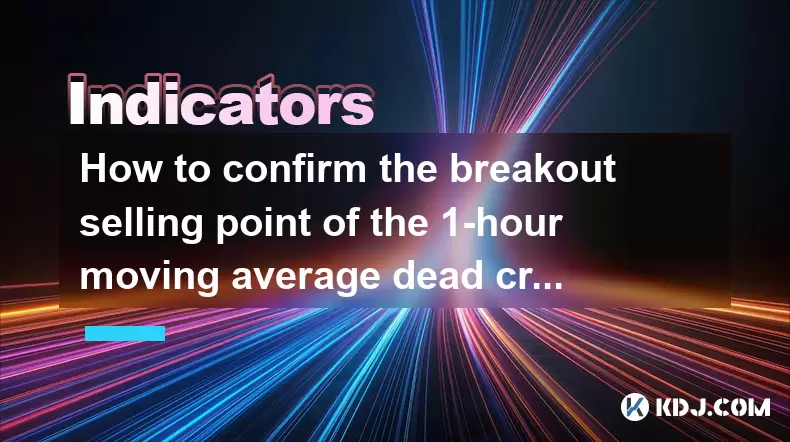
Understanding the 1-Hour Moving Average Dead Cross
In cryptocurrency trading, the 1-hour moving average dead cross is a bearish technical signal that occurs when a short-term moving average crosses below a long-term moving average on the 1-hour chart. This typically involves the 50-period moving average (MA) crossing beneath the 200-period moving average, commonly referred to as the "Golden Cross" in reverse. The dead cross indicates a potential shift from a bullish to a bearish trend, especially when confirmed by volume and price action.
Traders often use the simple moving average (SMA) or exponential moving average (EMA) depending on their strategy. For this setup, the EMA is preferred due to its responsiveness. To identify the dead cross:
- Open your preferred trading platform (e.g., TradingView, Binance Futures, or Bybit).
- Load the 1-hour timeframe for the cryptocurrency pair (e.g., BTC/USDT).
- Apply the 50 EMA and 200 EMA indicators from the platform’s indicator library.
- Monitor the chart for the moment the 50 EMA crosses below the 200 EMA — this is the dead cross.
It’s crucial to wait for the candle to close below both moving averages to avoid false signals from intra-candle volatility. The confirmation of the dead cross on the 1-hour chart sets the stage for further analysis on lower timeframes.
Decoding the 30-Minute Yin Bao Yang Pattern
The 30-minute Yin Bao Yang pattern is a Japanese candlestick formation used to detect short-term reversals. "Yin" refers to a bearish (black/red) candle, and "Yang" refers to a bullish (white/green) candle. Yin Bao Yang literally means "Yin engulfs Yang" — a bearish engulfing pattern where a large red candle completely engulfs the body of the previous green candle on the 30-minute chart.
This pattern signals strong selling pressure after a brief bullish attempt, reinforcing the bearish sentiment initiated by the 1-hour dead cross. To detect this:
- Switch to the 30-minute chart of the same cryptocurrency pair.
- Look for a green candle followed by a larger red candle whose body fully covers the previous green body.
- Ensure the engulfing candle has high trading volume, which validates the strength of the sell-off.
- The close of the red candle should be significantly lower than the open of the green candle.
This pattern becomes especially reliable when it forms near a key resistance level or after a failed breakout attempt. When combined with the 1-hour dead cross, it strengthens the case for a confirmed breakout selling point.
Confirming the Breakout Selling Point
To confirm the breakout selling point, traders must align signals from both timeframes and validate with price structure. A true breakout sell signal occurs when price breaks below a defined support level with momentum, confirmed by the technical patterns above.
Follow these steps:
- Identify a horizontal support zone on the 1-hour chart (e.g., previous swing low or consolidation area).
- Wait for price to approach and break below this support with a strong bearish candle.
- Confirm that the 1-hour dead cross has already formed or forms concurrently.
- Check the 30-minute chart for a Yin Bao Yang pattern near or at the breakdown point.
- Ensure volume increases during the breakdown, indicating institutional or aggressive retail selling.
For example, if BTC/USDT breaks below $60,000 with a large red 1-hour candle, and the 50 EMA has just crossed under the 200 EMA, while the 30-minute chart shows a clear Yin Bao Yang engulfing pattern at $60,200, this confluence confirms a high-probability breakout selling point.
Executing the Short Trade
Once the signals align, executing the short trade requires precision to maximize reward and minimize risk.
- Set your entry point at the close of the 1-hour bearish breakout candle or the close of the 30-minute Yin Bao Yang candle, whichever confirms first.
- Place a stop-loss slightly above the recent swing high or above the high of the engulfing candle on the 30-minute chart. For instance, if the high of the Yin Bao Yang candle is $60,500, set the stop at $60,600 to allow for minor wicks.
- Determine your take-profit levels using Fibonacci extensions or previous support zones. A common target is the next 1.618 or 2.618 extension from the recent swing.
- Use position sizing based on your risk tolerance — never risk more than 1-2% of your trading capital on a single trade.
- Consider using a trailing stop if the downtrend accelerates, allowing you to capture extended momentum while protecting profits.
Trading platforms like Binance or Bybit allow setting these parameters directly in the order interface. For example, in Binance Futures:
- Click “Short” on the BTC/USDT perpetual contract.
- Set Order Type to “Limit” or “Market” depending on urgency.
- Input entry price, stop-loss, and take-profit values.
- Enable “Post-Only” if using limit orders to avoid paying taker fees.
Monitoring Exit Signals and Risk Management
Even after entering a short trade, continuous monitoring is essential. False breakdowns can occur, especially in volatile crypto markets. Watch for bullish reversal patterns on the 30-minute chart, such as a Piercing Line or Morning Star, which may indicate weakening bearish momentum.
Additionally, monitor the 1-hour moving averages — if the 50 EMA starts to flatten or turn upward, the dead cross signal may lose validity. Also, check for divergence on the RSI (e.g., price making lower lows but RSI making higher lows), which could foreshadow a reversal.
Risk management includes:
- Avoiding over-leveraging — use 3x to 5x leverage unless you’re an experienced trader.
- Not adding to losing positions without a confirmed re-entry signal.
- Keeping a trading journal to log the outcome of each dead cross + Yin Bao Yang setup for future review.
Frequently Asked Questions
What is the difference between a dead cross and a golden cross?
A dead cross occurs when the 50 MA crosses below the 200 MA, signaling bearish momentum. A golden cross is the opposite — the 50 MA crosses above the 200 MA, indicating bullish momentum. Both are trend-reversal indicators but in opposite directions.
Can the Yin Bao Yang pattern appear in other timeframes?
Yes, the Yin Bao Yang pattern can appear on any timeframe. However, for this strategy, the 30-minute chart is used to align with the 1-hour trend signal. Patterns on lower timeframes (e.g., 5-minute) are noisier and less reliable.
How do I avoid false breakouts when using this strategy?
Wait for candle close confirmation on both the 1-hour and 30-minute charts. Also, require increased volume during the breakdown. Avoid trading during low-liquidity periods like weekends or major news events.
Should I use EMA or SMA for the moving averages?
The EMA is recommended because it reacts faster to recent price changes, providing earlier signals. The SMA is smoother but lags more, which may delay your entry and reduce profitability.
Disclaimer:info@kdj.com
The information provided is not trading advice. kdj.com does not assume any responsibility for any investments made based on the information provided in this article. Cryptocurrencies are highly volatile and it is highly recommended that you invest with caution after thorough research!
If you believe that the content used on this website infringes your copyright, please contact us immediately (info@kdj.com) and we will delete it promptly.
- Pump, Bonk, Buyback: A Wild Ride in Crypto Town!
- 2025-07-25 19:10:12
- Punisher Coin, Dogecoin, Shiba Inu: Meme Coin Mania in the 2025 Crypto Landscape
- 2025-07-25 19:10:12
- Celestia's Token Control: Buyback & Staking Overhaul in Focus
- 2025-07-25 19:50:11
- Altcoins, Bitcoin, and Crypto Coins: What's Hot in the NYC Crypto Scene?
- 2025-07-25 19:55:52
- Litecoin Price Breakout Imminent? Rally Potential Explored!
- 2025-07-25 17:30:12
- Ether ETFs Surge, Bitcoin Wobbles: Is an ETH Breakout Imminent?
- 2025-07-25 16:50:12
Related knowledge

How to interpret that the KDJ D line is downward for a long time but the price is sideways?
Jul 25,2025 at 07:00pm
Understanding the KDJ Indicator and Its ComponentsThe KDJ indicator is a momentum oscillator widely used in cryptocurrency trading to assess overbough...

What does it mean that the KDJ indicator forms a double bottom at a low level?
Jul 25,2025 at 05:08pm
Understanding the KDJ Indicator in Cryptocurrency TradingThe KDJ indicator is a momentum oscillator widely used in cryptocurrency trading to identify ...
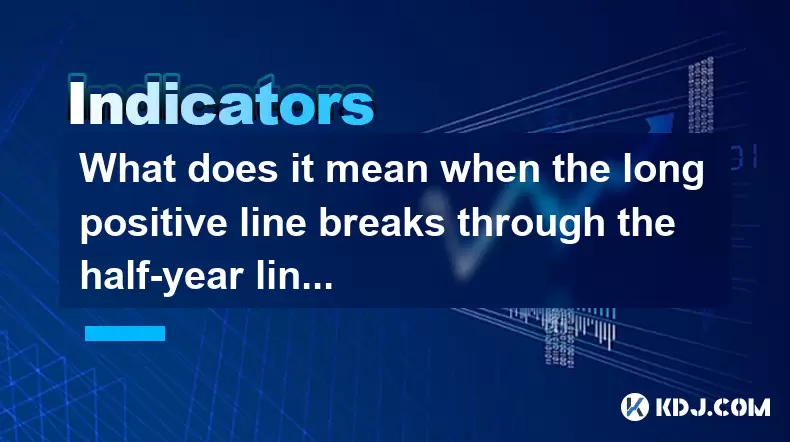
What does it mean when the long positive line breaks through the half-year line and then steps back?
Jul 25,2025 at 06:49pm
Understanding the Long Positive Line in Candlestick ChartsIn the world of cryptocurrency trading, candlestick patterns play a vital role in technical ...
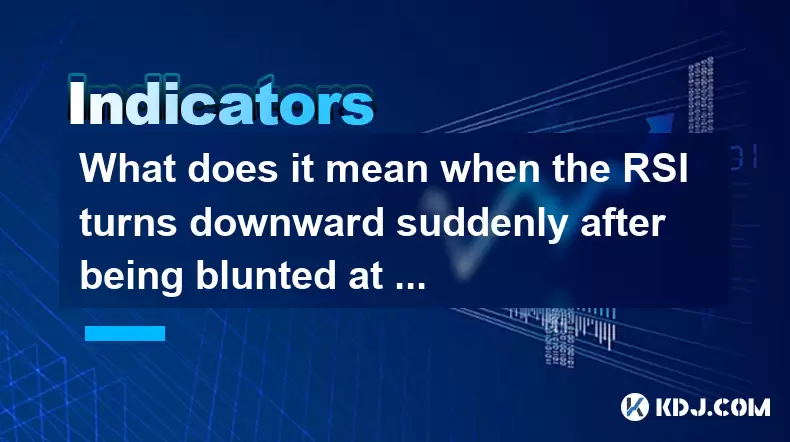
What does it mean when the RSI turns downward suddenly after being blunted at a high level?
Jul 25,2025 at 04:00pm
Understanding the RSI and Its Role in Technical AnalysisThe Relative Strength Index (RSI) is a momentum oscillator that measures the speed and change ...
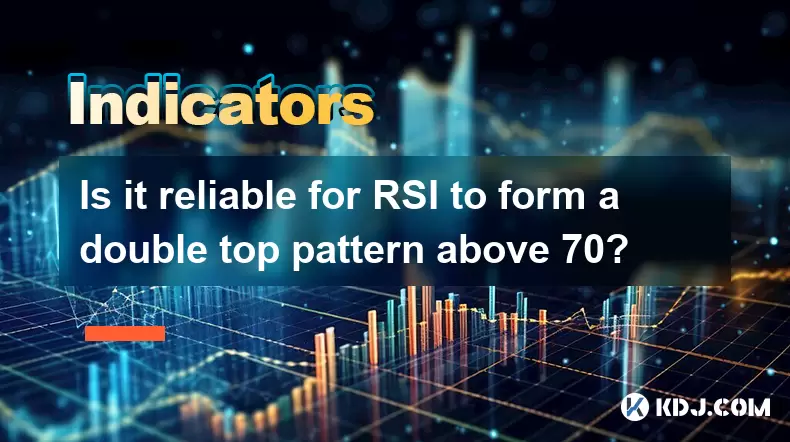
Is it reliable for RSI to form a double top pattern above 70?
Jul 25,2025 at 04:49pm
Understanding the RSI Indicator and Its Role in Technical AnalysisThe Relative Strength Index (RSI) is a momentum oscillator that measures the speed a...
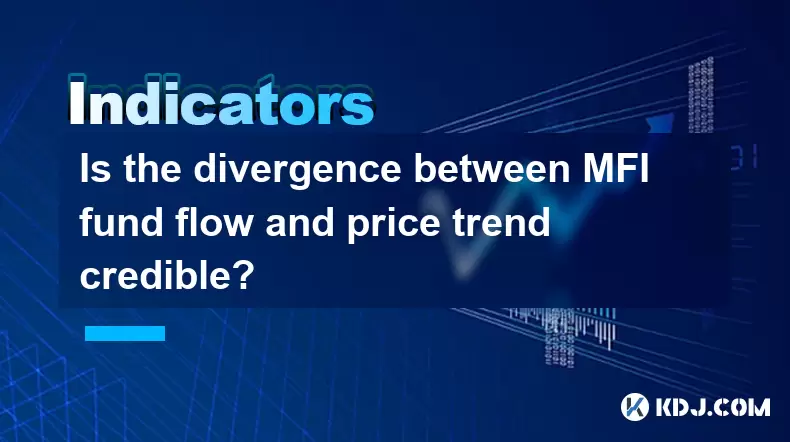
Is the divergence between MFI fund flow and price trend credible?
Jul 25,2025 at 12:01pm
Understanding MFI and Fund Flow in Cryptocurrency MarketsThe Money Flow Index (MFI) is a technical oscillator that combines price and volume to assess...

How to interpret that the KDJ D line is downward for a long time but the price is sideways?
Jul 25,2025 at 07:00pm
Understanding the KDJ Indicator and Its ComponentsThe KDJ indicator is a momentum oscillator widely used in cryptocurrency trading to assess overbough...

What does it mean that the KDJ indicator forms a double bottom at a low level?
Jul 25,2025 at 05:08pm
Understanding the KDJ Indicator in Cryptocurrency TradingThe KDJ indicator is a momentum oscillator widely used in cryptocurrency trading to identify ...

What does it mean when the long positive line breaks through the half-year line and then steps back?
Jul 25,2025 at 06:49pm
Understanding the Long Positive Line in Candlestick ChartsIn the world of cryptocurrency trading, candlestick patterns play a vital role in technical ...

What does it mean when the RSI turns downward suddenly after being blunted at a high level?
Jul 25,2025 at 04:00pm
Understanding the RSI and Its Role in Technical AnalysisThe Relative Strength Index (RSI) is a momentum oscillator that measures the speed and change ...

Is it reliable for RSI to form a double top pattern above 70?
Jul 25,2025 at 04:49pm
Understanding the RSI Indicator and Its Role in Technical AnalysisThe Relative Strength Index (RSI) is a momentum oscillator that measures the speed a...

Is the divergence between MFI fund flow and price trend credible?
Jul 25,2025 at 12:01pm
Understanding MFI and Fund Flow in Cryptocurrency MarketsThe Money Flow Index (MFI) is a technical oscillator that combines price and volume to assess...
See all articles

























































































